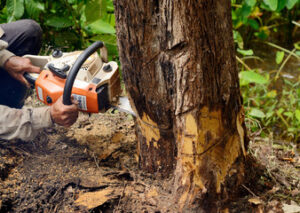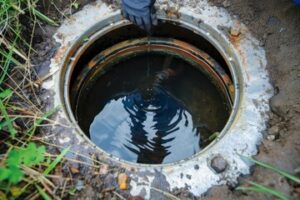The exterior of your home says a lot about the way you live. Whether you’re trying to keep up with the Joneses or want to boost your property value when you sell, there are several factors to consider.

One option that’s gaining popularity is Vinyl Siding Richmond VA. This durable material comes in a wide range of colors, textures and styles for a customized look.
Siding is the first thing that people see when they approach your home, and it shapes the impression that neighbors, visitors, and potential buyers get. A well-maintained home with beautiful, high-quality siding instantly creates a positive impression and signals that your property is cared for and inviting.
Vinyl siding comes in a variety of colors and textures that can enhance the architectural style of your home while creating aesthetic harmony with the surrounding environment. Neutral hues like white and gray provide a clean and elegant look while bold shades of green and blue can add a pop of color that highlights your home’s unique features. Specialty vinyl siding options, such as Dutch lap profiling and scalloped accents, can also enhance your home’s aesthetic with a distinctive look that is both timeless and contemporary.
Decorative accents, like colorful trim and unique front doors, add visual interest and personality to your home’s exterior and complement the chosen color palette and siding style. Plants, trees, and other landscape elements can further boost your home’s curb appeal by creating a seamless integration with your house siding and other exterior upgrades.
A quality exterior renovation that includes new vinyl siding and landscaping can significantly increase your home’s resale value. While a quality vinyl installation may cost more upfront than other materials, its low-maintenance nature and long lifespan ensures that the investment pays off in the future when you’re ready to sell your home.
Upgrading your home’s siding can also increase its energy efficiency, which is another important factor when calculating resale value. However, certain types of siding may not be appropriate or allowed in historic districts and neighborhoods with specific architectural styles, so consult local regulations and guidelines before installing vinyl siding.
Siding can be an affordable way to transform your home’s appearance, so don’t be afraid to experiment with a bold color or add interesting trim details. Adding other exterior touches, like new lighting fixtures or a welcoming front door, can also elevate your home’s curb appeal without breaking the bank.
Energy Efficiency
Many homeowners choose vinyl because it is a more energy efficient choice than brick or stone exteriors. This is because insulated vinyl reduces the amount of heat that passes through wall surfaces. It also helps to keep cool air inside in the summer and warm air in during the winter, reducing your HVAC bills and making your home more comfortable.
The insulation in insulated vinyl siding is usually made of rigid foam, which is more effective than the insulation used in traditional walls. This increased efficiency contributes to a higher R-value for the siding, which in turn translates into energy savings for you and your family.
Another advantage of insulated vinyl is that it helps to reduce the humidity levels inside your home. High humidity levels can cause your home to feel warmer than it actually is, which isn’t something you want in the summer when you want to turn down the thermostat.
Unlike some other materials, vinyl isn’t prone to color fading or damage caused by sunlight. This is due to a combination of improvements in production, which ensure the material is durable enough for outdoor use, and a wide variety of finishes that provide beautiful and long-lasting colors. It is important to note, however, that if you choose to repaint your vinyl, it’s best to use an oil-based paint to ensure it adheres properly and doesn’t fade or become damaged over time.
In addition to the color options available, you can also find a range of different style enhancements for your vinyl. Some vinyl options come with authentic shingle and shake siding to create the look of a more traditional home, while others feature shadow lines and textures that can help add depth to your exterior. You can also get a selection of gable trim, such as half-rounded, hand-splint, and staggered trim pieces, to give your home an even more custom appearance.
In addition, insulated vinyl is able to resist heavy wind more effectively than some other materials. This is because it features a double-hem nailing, which keeps panels securely attached to the sheathing and prevents them from pulling away during high winds. This is an especially useful feature if you live in an area that experiences frequent storms or hurricanes.
Durability
Many homeowners are often hesitant to choose vinyl siding for their homes because they’re worried about how long it will last. While early versions of this cladding material did tend to fade, sag, and crack over time, recent technological and chemical improvements have dramatically improved its durability.
Today, vinyl is a popular exterior cladding option for homes. It can be molded into various shapes, colors, and textures to create an aesthetic that fits any architectural style. This versatility also allows it to offer a cost-effective alternative to more expensive materials, like fiber cement or natural wood, for the same home-enhancing look and feel.
One of the main reasons that vinyl has become a leading choice for residential use is its resistance to natural elements and weather conditions. It’s a durable material that can withstand wind speeds up to 110-mph, and it won’t rot or decay like natural wood options. This longevity is augmented by features that protect it against sun damage, including UV rays and the chemicals used to produce the product.
The color of vinyl siding can have a big impact on how long it will last, with lighter shades generally lasting longer than darker ones. This is due to the protective chemicals that are added to the PVC formulation to prevent it from fading over time. Additionally, a UV coating is often applied to the surface of vinyl to filter out the rays that can degrade it.
While the longevity of any siding depends on a variety of factors, vinyl is among the most durable materials that can be chosen for homes. If it’s properly maintained, this type of cladding can last for as long as 50 years before needing replacement.
Elias is the founder of CoMo Premium Exteriors, a mid-Missouri home renovation firm that prioritizes quality and customer-centric values. A lifelong resident of Columbia, he enjoys spending time with his family and is an avid supporter of Mizzou athletics. When not working, he loves hiking and enjoying nature. He has been in the home improvement industry for over 25 years.
Low Maintenance
While many different cladding materials are touted as being low-maintenance, few of them are truly as easy to maintain as vinyl. The material can be washed clean with a hose or power washer to remove dirt, dust, and debris. While it’s not completely impervious to dirt, vinyl is less prone to staining and requires far less maintenance than wood siding.
Additionally, vinyl is a great choice for homeowners who are concerned about the environment, as it doesn’t require the use of natural resources to manufacture and can be recycled. It also doesn’t need to be re-painted, eliminating the possibility of harmful paints or stains being introduced into the local wildlife and flora.
When properly installed, vinyl can last up to 30 years or more without requiring significant maintenance. However, it’s important to have a professional contractor complete the installation process. If not done correctly, moisture can seep into the walls and cause a variety of problems. A skilled installer will ensure a seamless, watertight fit, using a house wrap and other protective measures to prevent water infiltration.
Another benefit of working with a VSI certified installer is that you can be sure the product and installation are high-quality. In fact, a quality installation can help your home maintain its resale value and increase its energy efficiency.
The VSI certification ensures that you’re working with a trained and experienced professional who has been properly trained to install the vinyl siding you choose for your home. The VSI installers will know the best methods and techniques to use for each specific type of vinyl siding. This includes installing insulation and ensuring all seams and joints are fully caulked to prevent leaks and protect against the elements.
If you’re ready to take advantage of the many benefits that come with vinyl siding, be sure to contact us today. We’ll be happy to answer your questions and provide you with a quote for the work you need completed. We look forward to helping you improve your home’s curb appeal and overall value with a beautiful new exterior!








